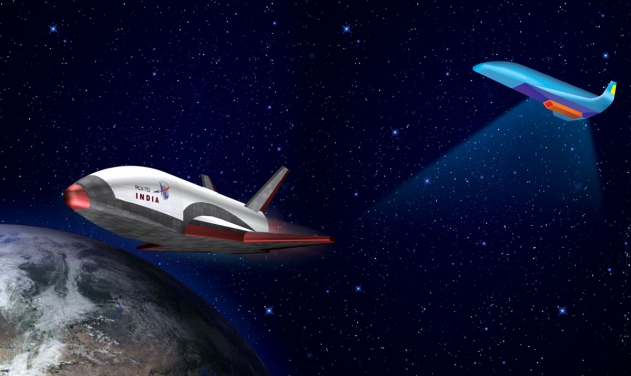ISRO Tests Reusable Launch Vehicle Tech Demonstrator

The Indian Indian Space Research Organisation has successfully launched a Reusable Launch Vehicle Technology Demonstrator mission Monday.
The flight began at 07:00 Indian Standard Time on 23 May (01:30 UTC), resulting in a successful launch for the winged, reusable space plane that conducted a suborbital mission to gather in-flight data.
The quest to develop reusable spaceflight has led ISRO to develop a series of Technology Demonstration missions in a phased approach toward the introduction of a new Two-Stage To Orbit, winged, reusable launch vehicle, NasaSpaceFlight reported Monday.
As part of this development sequence, ISRO has developed a four flight test sequence that will incrementally test the various flight characteristics its under-development Reusable Launch Vehicle (RLV) will experience during flight as well as the scramjet propulsion engines the RLV is planned to use.
This four flight test sequence includes the Hypersonic Flight Experiment (HEX), the Landing Experiment (LEX), the Return Flight Experiment (REX), and the Scramjet Propulsion Experiment (SPEX).
The mission that launched was HEX, the first test in the four-flight sequence. The HEX mission used a scaled prototype, called the Reusable Launch Vehicle – Technology Demonstrator (RLV-TD), of the RLV design.
In total, the RLV-TD is a 1.75 ton, 6.5 meter long vehicle that is able to achieve an altitude of approximately 70 kilometers.
The RLV-TD was mounted atop a 1 meter in diameter, 9 ton solid booster (HS9) and launched from the first launchpad at the Satish Dhawan Space Centre, previously known as the Sriharikota High Altitude Range, in southeastern India.
The HS9 booster launched the RLV-TD beyond most of Earth’s lower atmosphere.\
After a 90sec burn, the booster delivered the RLV-TD to the proper altitude before separating from the prototype and destructively fall back to Earth in the Bay of Bengal.
Meanwhile, the RLV-TD continued on, falling back into Earth’s atmosphere at hypersonic velocity. During this hypersonic test, the RLV-TD pitched its nose up relative to the horizon and direction of travel – just as the Space Shuttles did during atmospheric entry.
This allowed engineers to gather valuable in-flight data surrounding the performance of the vehicle’s thermal protection system (600 heat-resistant tiles and a carbon-carbon nose), its aerodynamic characteristics during hypersonic flight, and inform the overall design of the eventual full-scale RLV.
Since this was primarily a hypersonic flight technology demonstration mission, this particular RLV-TD did not carry the capability to return to land for landing.
Therefore, once it performed its primary mission glide through the atmosphere, it gently splashed down into the Bay of Bengal for – what is understood through seemingly conflicting reports – recovery.









